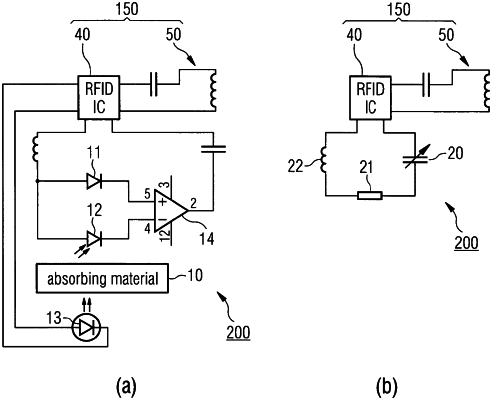| CPC H04Q 9/00 (2013.01) [H05K 1/0274 (2013.01); H05K 2201/10106 (2013.01)] | 7 Claims |

|
1. A communication device comprising:
a sensing element for monitoring a state of a single-use sterilizable element, wherein the state of the single-use sterilizable element is determined by at least one environmental condition, the sensing element comprising a variable component having at least one physical property that is configured to change in response to the at least one environmental condition and/or a change thereof, wherein the variable component comprises a sensing material with changing absorption characteristics for electromagnetic radiation configured to change in response to the at least one environmental condition and/or the change thereof;
an electronic circuit;
an antenna connected to the electronic circuit, the antenna being configured to transmit a radio-frequency signal modulated by the electronic circuit;
coupling means configured to operatively couple the electronic circuit to the sensing element;
wherein:
the electronic circuit is operatively coupled to the sensing element so that the at least one physical property affects a modulation of the modulated radio-frequency signal,
the coupling means comprises a LED, a first photodiode, wiring and electrical components,
the LED and the first photodiode are disposed such that the sensing material is between the LED and the first photodiode, and
the LED is configured to emit light towards the sensing material to be transmitted by the sensing material, such that the light that is transmitted by the sensing material is incident on the first photodiode.
|